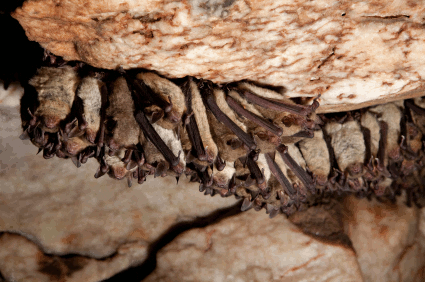|
Bat Caves Bat caves such as Bracken Cave (close to San Antonio, Texas, U.S.A.), provide the world with some of the best bat shows on earth! In fact, during the summer time, Bracken Cave is home to a staggering 20 million plus
Mexican free-tailed bats.
And the fact that they're often home to large bat populations means that any disturbance of these sites or changes in how the land is used, can have serious consequences for them.
Collection of bat poop or guano, tourism and cave exploration (potholing/spelunking) are just some of the ways cave roosts can be disturbed. All of these activities affect the Bumblebee bat ,which roosts in limestone caves in Thailand and Myanmar. This species is classified as vunerable in the International Union for the Conservation of Nature (IUCN) red list. The bat species that roost in caves tend to be the ones that can use echolocation. This amazing ability enables them to use ultrasound to find their way round in the dark. So what makes these dark, cool, mysterious places so attractive to bats? It's those very same qualities. Well maybe not the mystery but definitely the lack of light and cool temperatures make them perfect places for daytime roosts or winter
hibernacula.
Return from Bat Caves to the Chiroptera - the order of bats
|







